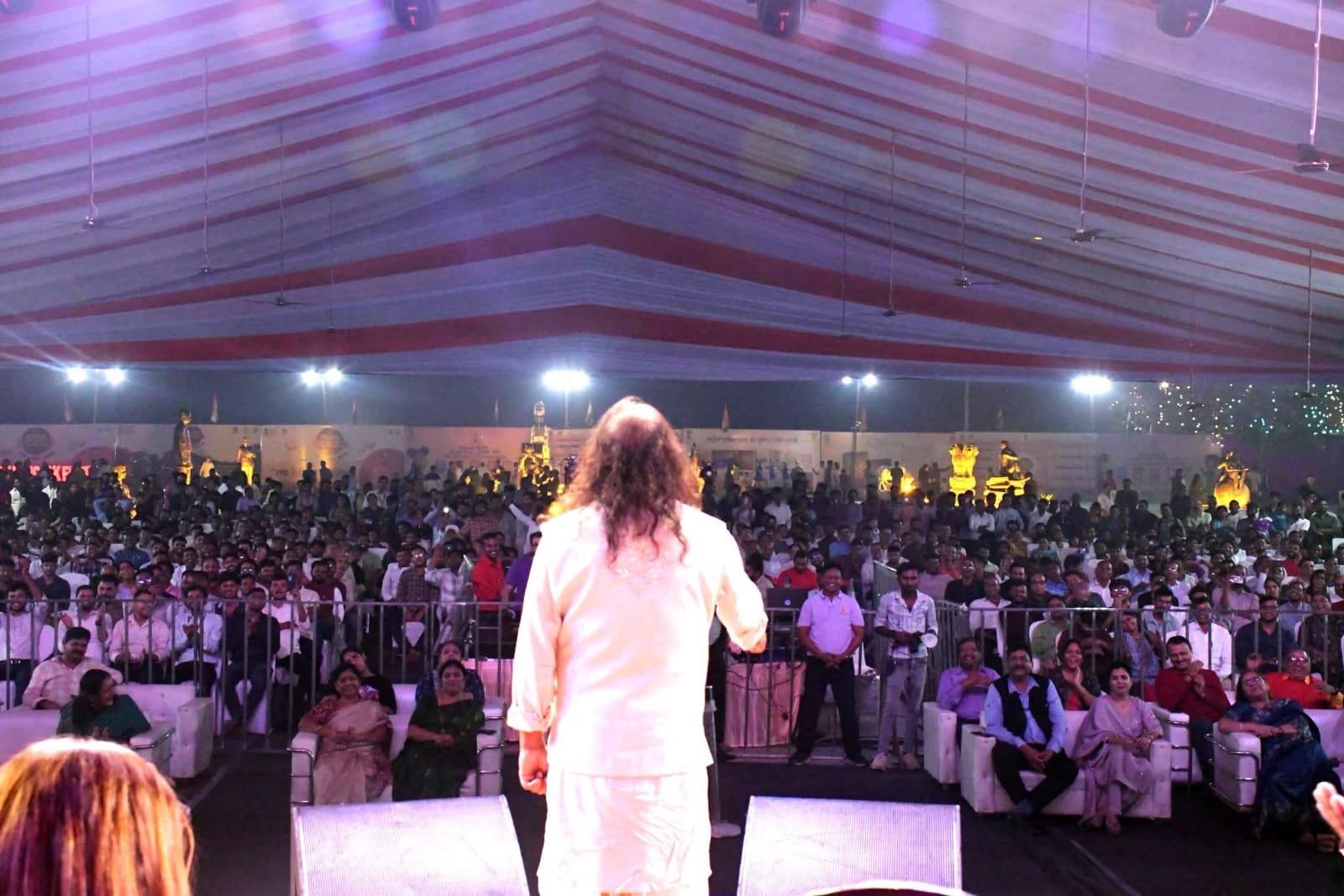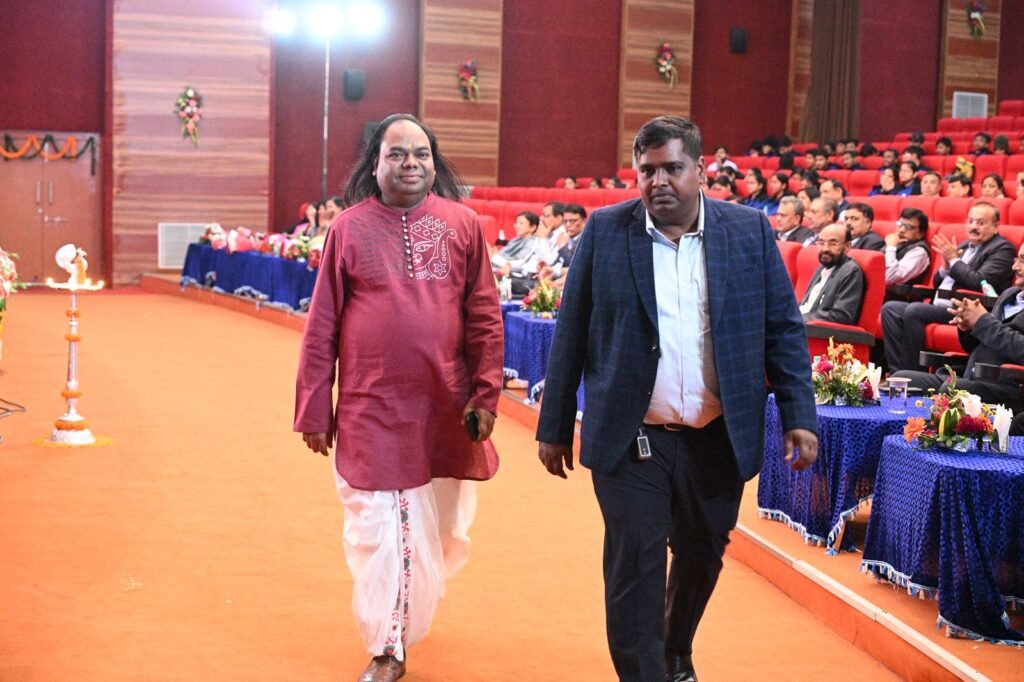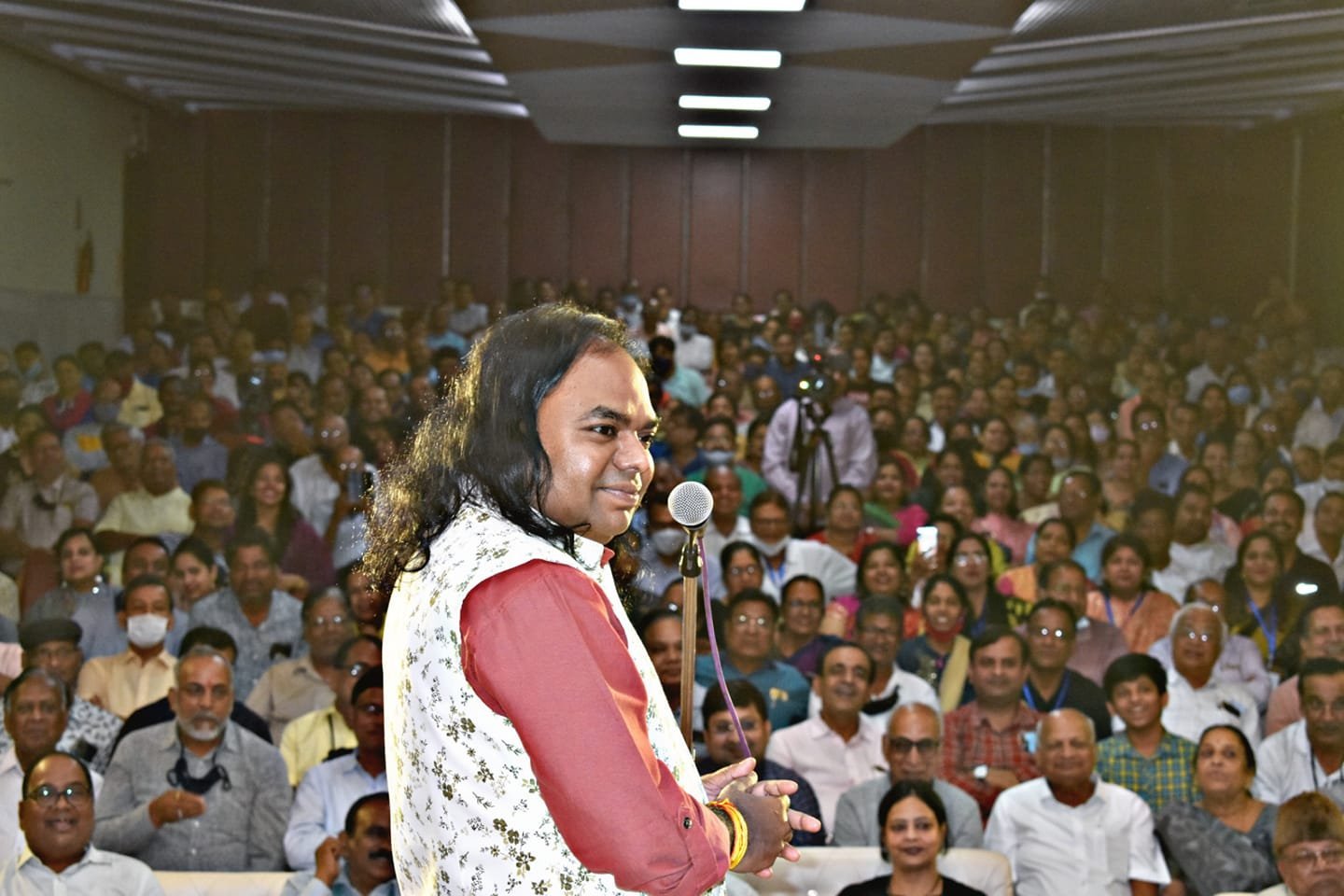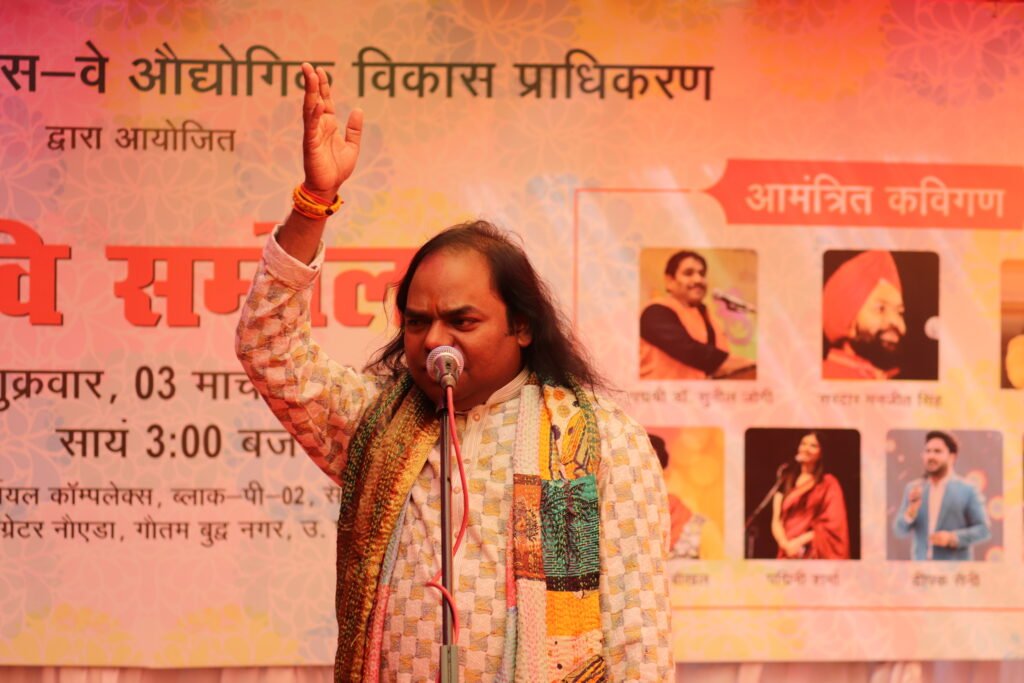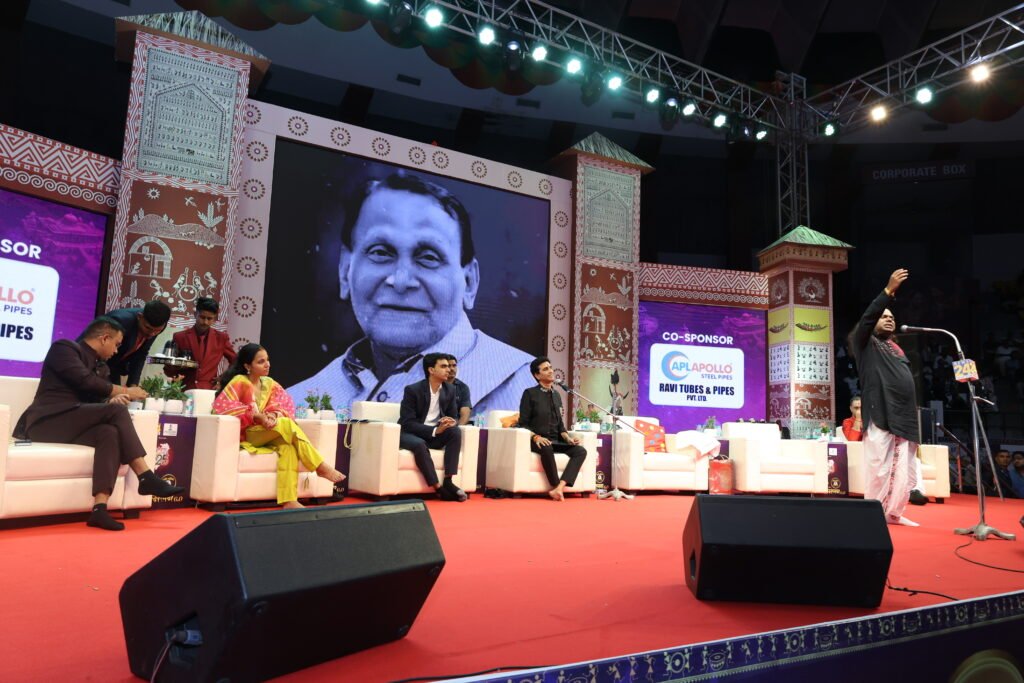There’s nothing like an evening of a Hasya Kavi Sammelan to make a room — or a nation — laugh together. Rooted in the oral-poetic tradition of North India, kavi sammelans (poet gatherings) — and especially Hasya (comic) Kavi Sammelans — combine wit, satire, local language, and live performance in a way modern entertainment rarely matches. Below I explain why we should keep organising them, why they remain an excellent medium of entertainment today, and highlight the role of contemporary stars such as Shambhu Shikhar and other well-known poets who keep this tradition alive.
Live laughter builds community and calm
In an era of fragmented attention — endless scrolling, short-form videos, and solitary viewing — a live Hasya Kavi Sammelan pulls people into the same physical (or live-streamed) space and creates shared emotion: laughter. That collective response strengthens community bonds, crosses age barriers, and cultivates empathy. Local events, school programmes, corporate evenings or national festival stages all show how kavi sammelans bring diverse audiences together to laugh and reflect — something repeatedly observed in write-ups about the impact of such gatherings.

Comedy that teaches — satire with a conscience
Great hasya kavis do more than make people laugh; they mirror society. Through satire and gentle mockery, poets highlight daily absurdities, political foibles, family life and social trends. Because the performance is verbal and immediate, the satire lands fast and memorably — planting ideas without a lecture. This means kavi sammelans can entertain and awaken civic sense simultaneously, a combination that streaming sitcoms and clips rarely manage with the same cultural intimacy.
Language, wordplay and cultural preservation
Hasya kavis are masters of Hindi’s idioms, dialects and slang. Their verse preserves regional phrasing, humour rooted in dialect, and idiomatic expressions that textbooks don’t record. Holding sammelans helps preserve and popularise these linguistic strands for younger listeners who might otherwise lose touch with vernacular richness. Organisers and schools often note the educational and cultural value of such events for language preservation.
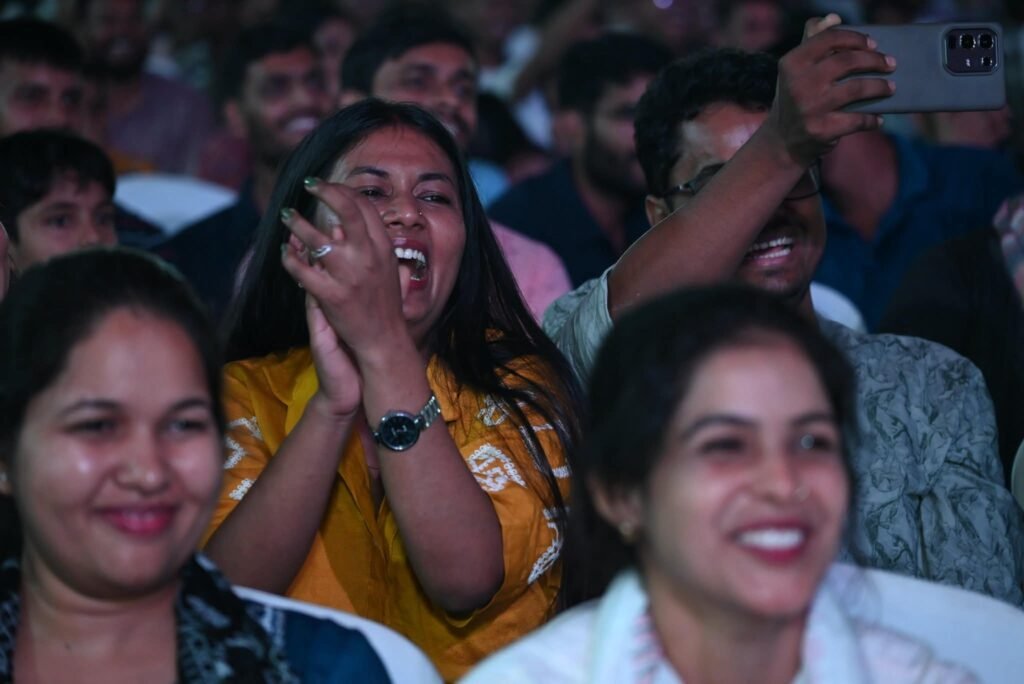
Flexible, accessible, and scalable entertainment
One of the practical strengths of kavi sammelans is flexibility. They work as intimate hour-long events, long festival evenings, corporate entertainment, or cross-border shows for diaspora communities. They can be low-budget or marquee shows with star poets; this makes them accessible for schools, NGOs, community centres and commercial organisers alike. This adaptability keeps the format economically viable and artistically vibrant.
The modern faces who make Hasya relevant today
Contemporary performers blend traditional poetic skill with modern sensibilities. Shambhu Shikhar — a poet, comedian and satirist from Madhubani — is a standout example: he rose through TV stages such as Wah! Wah! Kya Baat Hai! and The Great Indian Laughter Challenge, performs widely at kavi sammelans, and mixes social satire with popular appeal. His work demonstrates how a hasya kavi can be both a traditional poet and a modern entertainer reaching digital audiences. (Wikipedia)
Alongside Shambhu Shikhar, several established and emerging names sustain the art form and broaden its reach — from veterans like Surender (Surendra) Sharma and Ashok Chakradhar, both admired for their comic verse and public stature, to younger satirists such as Pankaj Prasun and performing personalities like Shailesh Lodha who bridge television and kavi stages. Their different styles — earthy dialect humour, urbane satire, topical rap-like couplets — together make the format feel contemporary and diverse. (Wikipedia)
Digital-age synergy: live + online = wider reach
Kavi sammelans have embraced digital distribution. Performances recorded and shared on YouTube, Instagram and other platforms create a feedback loop: live events build reputation; online clips attract new audiences; new fans attend live shows. Poets with a strong online footprint (video clips, social posts) increase demand for physical shows — a powerful model for cultural revival. Shambhu Shikhar’s TV and online presence is a clear example of how modern kavi careers blend stage and screen.
Cost-effective cultural programming with social impact
Compared to large theatrical productions or celebrity concerts, a well-planned kavi sammelan can be organized at modest cost while delivering high cultural return: laughter, language promotion, community engagement, and sometimes fundraising for social causes. Schools, municipal bodies and cultural organisations frequently use sammelans to mark festivals, public events and educational initiatives because of this high impact-per-rupee value.
Hasya Kavi Sammelans are not an old-fashioned relic but a living medium that fits the needs of our times: they educate gently, preserve language, create shared joy, and adapt seamlessly to modern media. Organisers, schools, cultural bodies and community leaders should continue to program these events — invite established artists like Shambhu Shikhar and Surender Sharma alongside rising voices such as Pankaj Prasun — and use both live stages and online platforms to bring the tradition forward. When a room full of people laughs together, something important is being sustained: our ability to connect, critique, and celebrate — in verse.
Direct Contact to Hasya Kavi Saammelan Organizers Via phone – 9999428213,72178 74767
